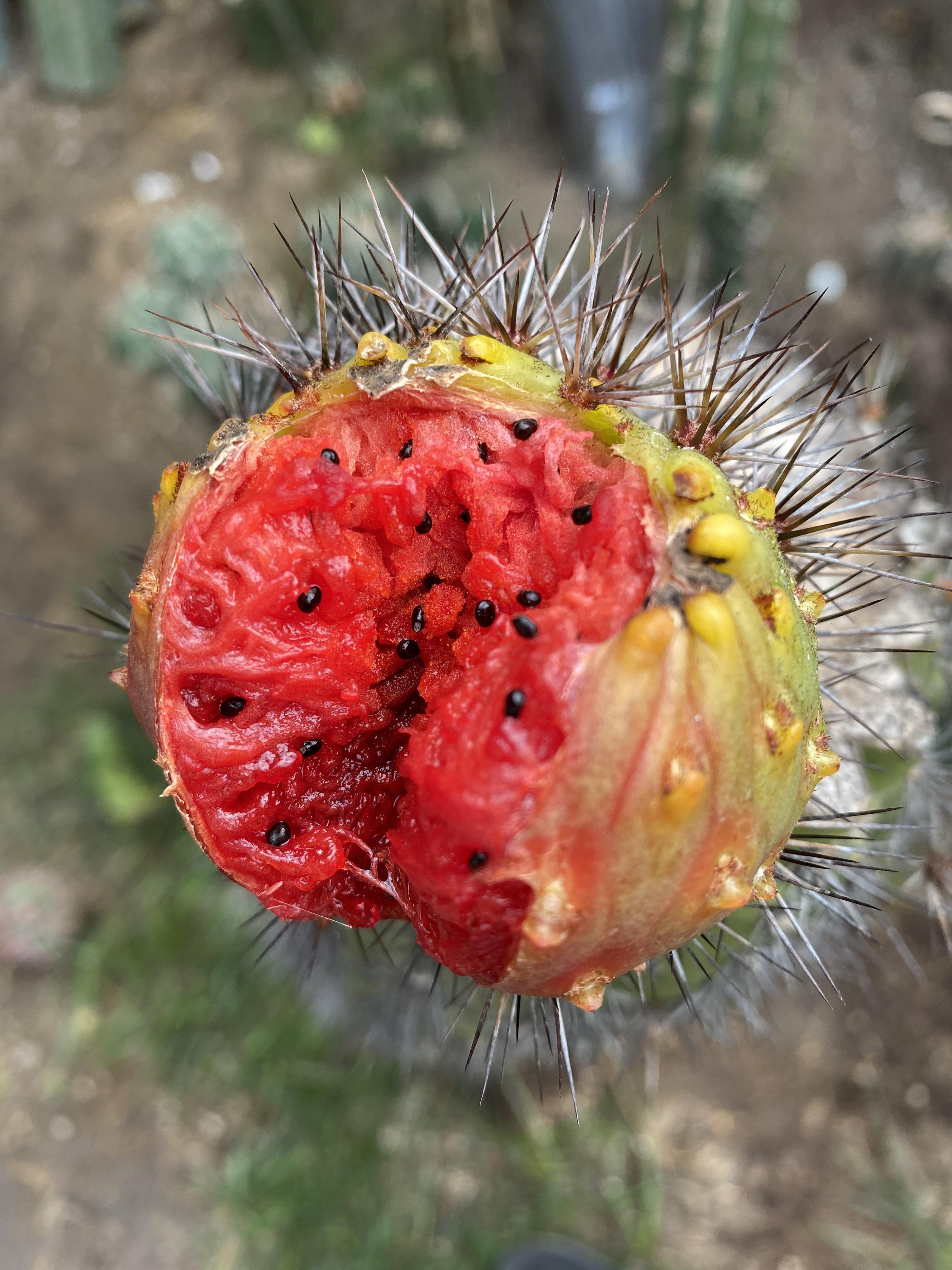
Stenocereus Thurberi ( Pitaya Dulce)
Stenocereus thurberi, commonly known as Pitaya Dulce or Organ Pipe Cactus, is a striking columnar cactus native to the Sonoran Desert in Mexico and parts of Arizona, typically growing to heights of 10-20 feet (3-6 meters) with multiple ribbed stems resembling organ pipes. It thrives in hot, arid climates, preferring temperatures between 70°F and 100°F (21°C to 38°C) and can tolerate extreme heat, though it is sensitive to frost and should not be exposed to temperatures below 32°F (0°C). Propagation occurs through seeds or cuttings, and it requires well-draining sandy soil with minimal watering. In late spring to early summer, it produces large, fragrant white flowers that bloom at night, attracting pollinators such as bats and moths. After flowering, the cactus bears sweet, edible fruits known as pitayas, which are typically harvested in late summer and are prized for their bright pink or red skin and delicious, creamy pulp. As a member of the Cactaceae family, Stenocereus thurberi has adapted to store water efficiently in its thick, succulent stems, allowing it to thrive in the harsh desert environment.